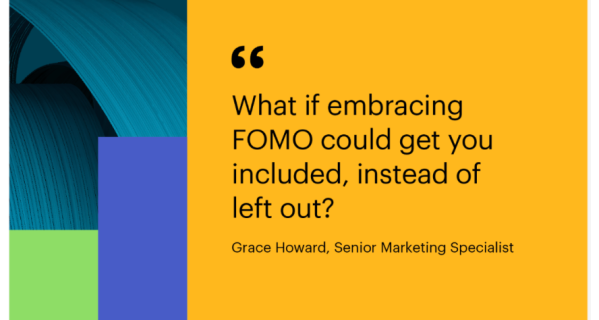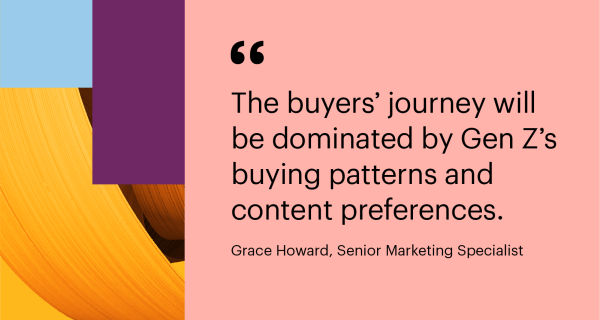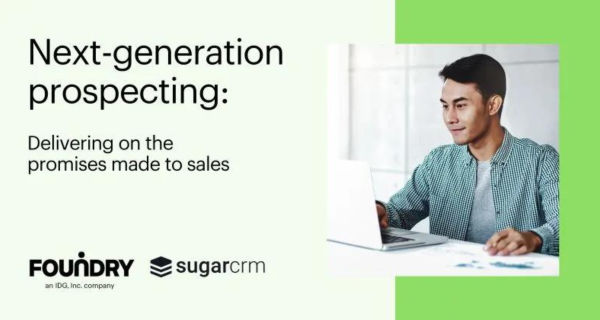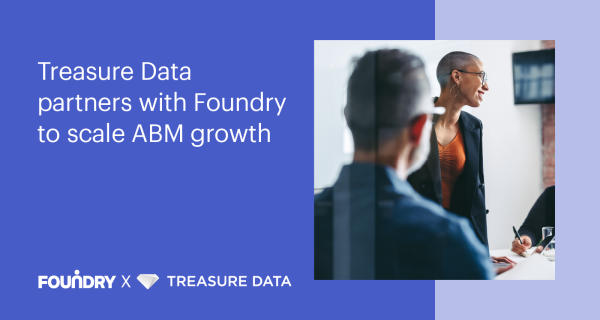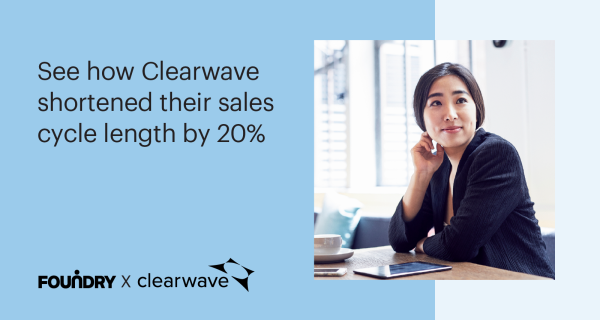If you work in the field of B2B marketing or ABM, you’ve most likely heard the term “orchestration” before – and if you have, you likely know that ABM Orchestration is no easy feat.
As marketers ourselves, we get it. With all the moving pieces that make up ABM orchestration, starting out can seem daunting at first. Oftentimes marketers are hamstrung by tools, platforms, and workflows that prevent them from orchestrating campaigns easily and at scale.
However, orchestration when done correctly, is the powerhouse behind some of the most successful ABM programs we’ve seen. So we’re here to break down the anatomy of a successful ABM orchestration, and tell you how you can get started executing impactful campaigns yourself.
What is orchestration and when to use it?
ABM orchestration is defined as the unified execution of multichannel, multistage campaigns that deliver the right message, at the right time, to the right buyers. Orchestration gives revenue teams the ability to take a data-driven approach to their TAM by utilizing predictive AI to uncover high-fit, high-intent accounts and target them in real-time with multichannel campaigns at scale.
Throughout the Foundry customer base, we found that ABM orchestration created a noticeable lift across channels:
- 2X higher email response rate
- 3X increase in web traffic from high-intent accounts
- 20% higher rate of form fills
How to orchestrate the perfect ABM campaign:
Over the years, we’ve orchestrated many ABM campaigns with our customers. In that time, we’ve identified campaign essentials that will help you orchestrate the perfect ABM campaign.
1. Account targeting
Every orchestration starts with one thing, an audience. Audiences are groups of visitors who meet criteria that you’ve defined. When setting up an audience, you’ll want to use your ICP to figure out who to target, and what the right segment to go after is. There are a few ways to select audiences for account-based campaigns:
- Pull directly from your CRM or marketing automation platform
- Upload static list
- Create dynamic segments
However, to see the best results and for the perfect orchestration, we recommend using or supplementing with these types of account targeting:
Intent-based criteria
Using intent-based criteria when building your audience will allow you to better identify and nurture buyers as they show propensity to buy. In fact, according to Foundry research, more than 90% of marketers said they use intent data scoring to prioritize accounts, identify content to be served and build target account lists.
Intent-based criteria can come from various sources showing first, second, or third-party intent signals. Let’s break down what each of those might look like, and their benefits:
- First-party intent signals
First-party intent signals come from your own sources. These could be website visits, page views, webinar attendance, or form fills. First-party intent is a great way to know what accounts are researching on your site and products or offerings they might be interested in.
- Second-party intent signals
Second-party intent signals come from software review sites like G2 or TrustRadius. These insights are a great way to target individuals who have been researching your page or even your competitors’ pages, allowing you to serve content specific to their needs.
- Third-party intent signals
Third-party intent data consists of research and buying activity occurring on channels and properties owned by others, allowing for a broader view of your market. Third-party intent generally comes from intent data providers (many of which integrate into ABM platforms like Foundry ABM). By pairing multiple types of intent data with ABM orchestration, you can achieve fuller coverage of your total addressable market in real time.
For example, Foundry Intent is a powerful combination of intent data collected from your website, social media interactions, engagements across the public web, research signals on global content, Foundry’s proprietary audiences from their publishing network, and events data. Foundry ABM allows you to build lists using Foundry Intent so you can target important decision-makers within your orchestrations. Want to experience the power of Foundry Intent firsthand? Try out our free tool, IntentBot.
Dynamic criteria
Dynamic criteria is another great way to build out audiences for your orchestrations.
Dynamic criteria will automatically update the audience for you as time goes on or as new data is synced into your ABM platform. For example, you can create dynamic criteria, such as ‘has shown G2 intent signal in the last 4 weeks’ which will then update the audience automatically for you. This saves you the valuable time of having to tediously create a list, upload it, then do it all again when the list is too old.
Another way to use dynamic criteria when building out audiences is referencing lists located in other places, such as your CRM or your MAP. By referencing a segment in your CRM or MAP, the criteria taken from there will automatically refresh, keeping your audience fresh and updated for improved engagement and results.
TIP: It’s important to keep in mind that each campaign can have multiple audiences, and each audience can have multiple criteria, so you can combine dynamic segments with intent for the best results.
2. Naming systems
Attention to detail is key when running an ABM program. Keeping your orchestrations organized with a naming system will help set you up for success in the future. We recommend that you prefix your campaign names consistently for ease of management.
A few common prefix styles that we’ve seen are:
- Lifecycle (e.g. “Unknowns – Finance industry”)
- Event-based (e.g. “2022 Q1 – Customer conference”)
- Account groups (e.g. “Tier 1 Target Accounts – mailer follow-up offers”)
- Time-based (e.g. “22q4 – Pipeline”)
- Location-based (e.g. “EMEA – 2021 Pipeline”)
These are just a few suggestions based on what we’ve seen our customers do – feel free to work with a naming convention that is in line with one you already use or that better fits your company.
3. Multichannel ads
Advertisements served across various channels are a large part of successful ABM orchestrations. When selecting channels to use for your specific orchestration, it’s important to keep in mind your goals, and the audience that is being served. In Foundry ABM, you can automate the creation and deployment of your ads based on intent and the criteria you’ve set.
Selecting your channels
- Display ads
Display ads appear across third-party sites (i.e. wsj.com or weather.com). Display ads are a great way to provide air-cover marketing and raise brand awareness within target accounts and key stakeholders! Using display ads allow you to reach a high intent audience with messaging that correlates to their intent, across the web.
- Paid social
Occasionally we all spend too much time browsing social media (guilty). So why not serve your audience ads on the places they spend their time such Facebook, or LinkedIn! Paid social ads allow you to pass dynamic segments into LinkedIn Matched Audiences and see LinkedIn engagement in Foundry reports.
4. Personalizations
Personalizations are distinct content experiences you want a given audience to have. Based on what audience is in your orchestration, you will want to personalize the content being served to them in order to resonate with what topics they are interested in. There are a few ways to personalize the buyer’s journey for your audiences:
- Smart Pages
Smart Pages are unique 1:1 web pages customized to the needs, interests, and buying profile of a specific account. Using Smart Pages, sales reps can reach out to target accounts with 1:1 content. For example, say an account in your audience has shown enough intent or engagement to move on in an orchestration. In the next stage, you can trigger a Smart Page personalization for that account to be served specific content on the topic they are interested in.
- Website personalization
In addition to Smart Pages, another way to use personalization in your orchestrations is through website personalization. Website personalization allows you dynamically edit any text, images, content, links etc. to better fit your audience’s needs. Visitors who have a personalized web experience are 20% more likely to convert and 50% more likely to visit the site again. And, personalized web experiences boost engagement on average 150% or more.
- Overlay CTAs
Overlay CTAs can be customized pop-ups, slide-ins, footers, or headers that appear across your site. These are particularly effective at generating conversions because they can have very specific tailored offers for site visitors. For example, if you want a specific audience to see a CTA to book a demo, you can show a “Chat with an expert” CTA over the product page they are interested in. You can customize any overlay CTAs to create an action that further aligns with the website and display advertising personalizations.
TIP: Personalization is also a great way to A/B test your orchestrations. Test what messaging or CTA resonates best with your orchestration audience!
5. Sales activations
When does your sales team come into the picture? Sales activation is a crucial part of running a successful ABM orchestration, requiring cohesive strategy between your marketing and sales teams. Sales activation lets your sales team know when accounts are primed and engaged, so they can reach out at the right time with content that resonates.
ABM orchestration allows you to automate the sales activation process, saving both marketing and sales precious time. Select accounts for each sales rep in their territory and automatically acquire contacts that fit within your ICP. Automatically add leads to prospect cadences and when engagement begins, trigger the next best step for your sales rep to follow up.
6. Stage progression
Orchestration allows us to build a timeline view of how we want to use different channels to reach, engage, and hopefully convert the target accounts in our program. A mature orchestration program is full-funnel and cross-channel, following buyers through their journey across platforms and stages with consistent messaging. Your stage design is where you actually set your stages and build out your orchestration timeline.
Orchestration allows you to automatically move accounts to new stages once they meet certain criteria. For an account to move on to a new stage in the orchestration, this depends on the criteria you’ve set. Most of the time these criteria are certain engagements that would signify if an account is ready to move on to the next stage. For example, some engagement criteria you could set for stage progression might look like:
- Did the account click on an Ad?
- Did the account visit my website x amount of times?
- Did the account view my pricing page?
When it’s time for your account to move on in the orchestration, a few things could happen. Your account can move into a positive or lower funnel stage, or into a knockout stage.
- Positive or lower funnel stages
Congrats, your account moved on in the orchestration! This means you can continue to nurture this account based on additional criteria as your accounts progress into other positive or lower funnel stages. Examples of additional stages could be for demo conversion ads or nurture actions like nurture emails in HubSpot.

Here you can see we used 2 triggers, 1 to send accounts with engagement in the previous stage to sales, and one to nurture less engaged accounts with case study ads on LinkedIn.
- Knockout stage
If your account does not meet certain criteria set in your first stage, your account will move on to what we call a negative stage. Although the word knockout doesn’t have the best connotation, a knockout stage isn’t necessarily a bad thing. When an account moves into a negative stage, this means it will sit there stagnant and won’t be served any more content on any more channels in this particular orchestration. This is a good thing though because it allows you to narrow your ad spend on accounts actually showing engagement. Accounts that aren’t interested or qualified will be knocked out, so you won’t waste any time or money on further nurturing them.

Every orchestration will look different for every marketer. The beauty of orchestration is being able to customize the campaign to fit your exact audiences and goals! However, to help you get started we’ve pulled together 4 actionable ABM plays that have been tried and tested with our own customers! Download your copy of the ABM Orchestration Playbook to get started.
Orchestration success
Foundry customer SugarCRM, is no stranger to ABM orchestration success. By leveraging intent data with ABM orchestration, SugarCRM hoped to lift account engagement in their target accounts and build out additional high-fit, high-intent audiences within their ideal customer profile (ICP).
ABM solution:
- By utilizing Bombora intent data to identify surging accounts within Foundry, SugarCRM could target unknown prospects or accounts showing confirmed interest.
- SugarCRM also utilizes 1:1 landing pages (Smart Pages) to connect with prospects.
- Sugar’s marketing team views surging account intent topics and data to understand an account’s buying experience up to the point of contact with sales. The sales team uses our ABM Analytics Module embedded directly into Sugar as well as Orchestration alerts and personalized Sugar dashboards to inform their sales plays and outreach strategies.
Since implementing an ABM strategy, Sugar has generated $9.9M in influenced pipeline attribution from their ABM efforts, with an estimated $2.8M in one quarter alone.
Conclusion
Now that you know how to orchestrate the perfect ABM orchestration, it’s important to remember that once you launch your campaign, you should check back in to see how accounts are progressing through the orchestration. After significant results have been gathered, you can optimize the campaign for improved performance!
Not only are marketers saving time by focusing on accounts with a high propensity to buy, but marketing teams are achieving better results with orchestration. Although orchestration is no walk in the park, using these campaign essentials will help you orchestrate the perfect ABM campaign.
Want a demo of the Foundry Orchestration platform? Schedule some time with one of our ABM experts. Or want some Orchestration inspiration? Download now, 4 free actionable ABM orchestration plays.

